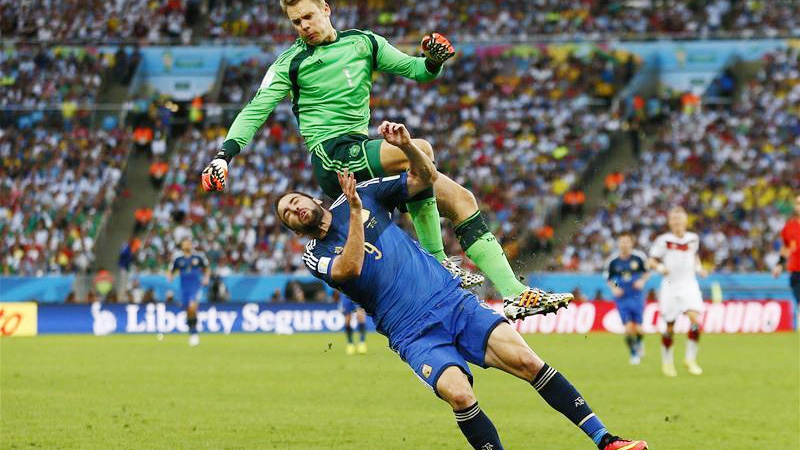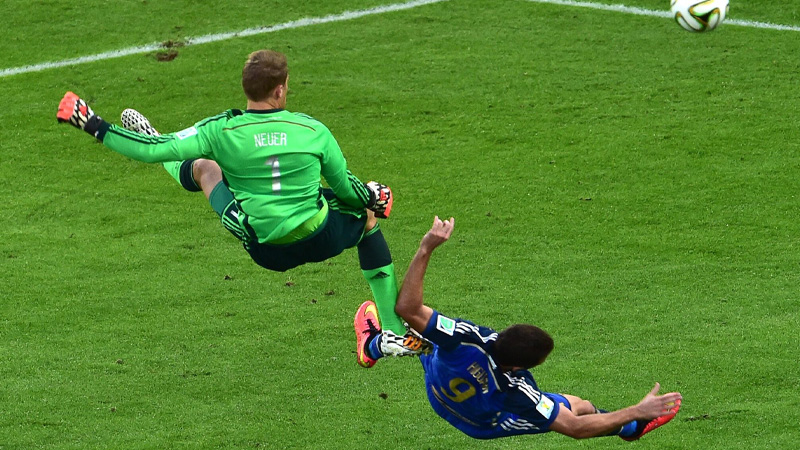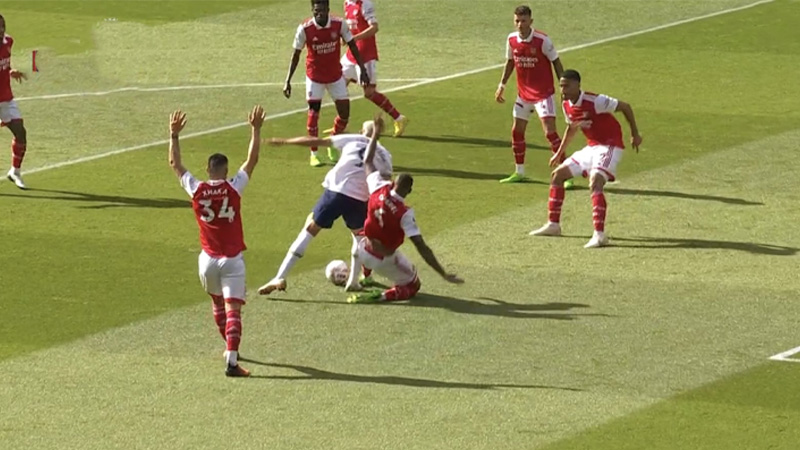Soccer, known for its skilful play and competitive spirit, adheres to a set of rules that govern the actions of players on the field. Among these rules, the concept of fouls plays a crucial role in maintaining fair and safe competition.
Understanding what is considered a foul in soccer is essential for players, coaches, and officials, as it dictates the flow of the game and influences the outcome of matches.
A foul occurs when a player violates the rules by engaging in illegal physical contact, committing handball, dangerous play, or other unsportsmanlike behaviours.
This introduction delves into what is considered a foul in soccer.
What Is Considered A Foul In Soccer?
Here are some explanations of what is considered a foul in soccer-
Tripping or Tackling from Behind
A foul in soccer is committed when a player trips or tackles an opponent from behind, making contact with their legs and causing them to lose balance or fall. Such actions are dangerous and can lead to injuries, so they are strictly prohibited in the sport.
Pushing or Holding
Pushing or holding an opponent to impede their progress or gain an advantage is considered a foul. It involves using physical force to disrupt the player’s movement and is not allowed in soccer.
Charging Violently
Charging an opponent with excessive force, especially when the ball is not within playing distance, is considered a foul. Soccer is a contact sport, but players must not engage in dangerous challenges that risk injury to others.
Dangerous Play
A foul can be called for dangerous play, which includes actions like high kicks near an opponent’s head or playing in a way that puts other players at risk of injury. The safety of all players is of utmost importance in soccer.
Handball
Intentionally handling the ball with the hand or arm is considered a foul. Players, with the exception of the goalkeeper within their own penalty area, are not allowed to handle the ball intentionally, as this can create an unfair advantage.
Slide Tackles from Behind
Slide tackles from behind, where a player attempts to win the ball by sliding into an opponent from the back, are usually considered fouls, as they pose a significant risk of injury.
Spitting or Using Offensive Language
Using offensive language, spitting at opponents, or showing disrespectful behaviour towards other players, referees, or fans can result in a foul. Such actions are considered unsportsmanlike conduct and are not tolerated in soccer.
Charging into the Goalkeeper
Charging or colliding with the goalkeeper, especially when they have control of the ball, is a foul. Goalkeepers have special protections when in possession of the ball and must not be unnecessarily put at risk.
Holding the Shirt
Grabbing or pulling an opponent’s shirt or jersey to gain an advantage is a foul. This action can impede the player’s movement and is not allowed in soccer.
Obstruction or Impeding the Progress
Deliberately obstructing an opponent’s movement or impeding their progress without attempting to play the ball is considered a foul. Players must make genuine efforts to win the ball and not intentionally obstruct their opponents.
Understanding what is considered a foul in soccer is crucial for players, coaches, and referees to ensure fair play and the safety of all participants.
Foul play can result in free kicks or penalty kicks for the opposing team, and serious fouls may lead to caution (yellow card) or expulsion (red card) of the offending player.
Upholding the rules of the game contributes to a positive and enjoyable soccer experience for everyone involved.
What Counts As A Foul In Football?

Here is a description on what counts as a foul in football-
Illegal Physical Contact
A foul in football is typically called when a player makes illegal physical contact with an opponent. This includes actions like pushing, tripping, or kicking an opponent, even if it was not intentional.
Any form of unnecessary or excessive physical force that hinders the opponent’s movement or puts them at risk of injury is considered a foul.
Handball
When a player deliberately handles the ball with their hand or arm, it is considered a foul.
The exceptions to this rule are the goalkeeper within their own penalty area and throw-ins, as players are allowed to use their hands to throw the ball back into play.
Dangerous Play
A foul can be called for dangerous play, which includes actions like high kicks near an opponent’s head or playing in a way that puts other players at risk of injury.
Dangerous play involves actions that are reckless or careless and can result in a free kick or penalty kick, depending on the severity of the offence.
Impeding an Opponent
Deliberately obstructing an opponent’s movement or impeding their progress without attempting to play the ball is considered a foul.
This is commonly known as “obstruction” or “charging,” and it is not allowed in football.
Holding or Shirt-Pulling
Grabbing or pulling an opponent’s shirt or jersey to gain an advantage is considered a foul. This action can impede the player’s movement and is strictly prohibited in football.
Slide Tackles from Behind
Slide tackles from behind, where a player attempts to win the ball by sliding into an opponent from the back, are often considered fouls, especially if they result in dangerous play or unnecessary physical contact.
Dissent or Unsportsmanlike Conduct
Players who use offensive language, show disrespect towards the referee, or behave in an unsportsmanlike manner can be penalized with a foul.
Dissent and unsportsmanlike conduct can result in a yellow card (caution) or red card (expulsion), depending on the severity of the behaviour.
Charging the Goalkeeper
Charging or colliding with the goalkeeper, especially when they have control of the ball, is a foul.
Goalkeepers have special protections when in possession of the ball and must not be unnecessarily put at risk.
Striking an Opponent
Any form of striking or hitting an opponent with the hand, arm, leg, or any part of the body is a foul.
Such actions are considered violent conduct and can lead to a red card and expulsion from the game.
Playing in an Offside Position
Though not a foul in itself, playing in an offside position can lead to a foul if the player becomes actively involved in play while in that position.
Offside is a position on the field where an attacking player is closer to the opponent’s goal line than both the ball and the second-last defender when the ball is played to them.
Understanding what counts as a foul in football is crucial for players, coaches, and referees to ensure fair play and the safety of all participants.
Foul play can result in free kicks, penalty kicks, or disciplinary action in the form of yellow or red cards, depending on the severity of the offence.
Upholding the rules of the game contributes to a positive and enjoyable football experience for everyone involved.
Different Types of Fouls in Soccer

Here are the different types of fouls in soccer-
Direct Free Kick Offenses
Direct free-kick offences in soccer are serious fouls that warrant a direct free-kick for the opposing team. These fouls typically involve physical contact or deliberate actions that hinder the opponent’s play.
Examples of direct free-kick offences include tripping, kicking, pushing, charging, or striking an opponent, as well as handling the ball intentionally (handball).
Indirect Free Kick Offenses
Indirect free-kick offences are less severe fouls that result in an indirect free-kick for the opposing team. Indirect free kicks require the ball to touch another player before a goal can be scored.
Examples of indirect free-kick offences include dangerous play (such as high kicks near an opponent’s head), impeding an opponent without contact, and playing the ball with the goalkeeper’s hands for more than six seconds.
Reckless Challenges
Reckless challenges involve actions that are careless or inconsiderate towards the safety of opponents.
While these offences may not always result in direct contact, they are considered dangerous and can lead to free kicks or cautions (yellow cards).
Reckless challenges may include late tackles, lunging into an opponent, or using excessive force in a tackle.
Violent Conduct
Violent conduct refers to aggressive and malicious actions that put players’ safety at risk. Such offences include striking or hitting an opponent with the hand, arm, leg, or any part of the body.
Violent conduct is a serious offence and can lead to a red card (expulsion) from the game.
Dissent and Unsportsmanlike Conduct
Dissent refers to showing disrespect towards the referee or disputing their decisions.
Unsportsmanlike conduct includes offensive language, taunting, or any behaviour that goes against the principles of fair play and good sportsmanship. These offences are cautioned with a yellow card.
Simulation or Diving
Simulation, commonly known as diving, occurs when a player exaggerates or fakes a foul to deceive the referee into awarding a free kick or penalty.
Such behaviour is considered unsportsmanlike and can lead to a caution for the offending player.
Foul on the Goalkeeper
Specific fouls can apply to the goalkeeper due to their unique role on the field. Charging into the goalkeeper or impeding them when they have possession of the ball is a foul.
Goalkeepers also have restrictions on handling the ball outside their penalty area, which can result in a free kick or even a red card if done intentionally.
Recognizing the different types of fouls in soccer is essential for players, coaches, and referees to ensure a fair and safe game.
Understanding the severity of each offence and the corresponding disciplinary actions, such as free kicks, cautions, or expulsions, helps maintain the integrity and enjoyment of the sport.
FAQ
What actions are considered fouls in soccer?
In soccer, various actions are considered fouls when they violate the rules of the game. Some common fouls include tripping, kicking, pushing, charging, or striking an opponent, as well as handling the ball intentionally (handball).
What are direct free-kick offences in soccer?
Direct free-kick offences are serious fouls that warrant a direct free-kick for the opposing team. Examples include physical contact with an opponent that impedes their movement, dangerous challenges, violent conduct such as striking an opponent, and intentional handball.
What are indirect free-kick offences in soccer?
Indirect free-kick offences are less severe fouls that result in an indirect free-kick for the opposing team. Examples include dangerous play (such as high kicks near an opponent’s head), impeding an opponent without contact, and playing the ball with the goalkeeper’s hands for more than six seconds.
Can a foul result in disciplinary action for the offending player?
Yes, a foul can result in disciplinary action for the offending player. Depending on the severity of the foul, the player may receive a caution (yellow card) or be expelled from the game (red card).
How are fouls penalized in soccer?
Fouls in soccer are penalized by awarding the opposing team a free kick or penalty kick, depending on the location of the foul. For direct free-kick offences, the opposing team takes a free kick from the spot of the foul.
Conclusion
In the world of soccer, fouls act as a pivotal component that demands respect for the rules and upholds the principles of fair play.
Understanding what is considered a foul in soccer is vital for players, coaches, and officials to ensure the game is played with skill, strategy, and respect.
From direct free-kick offences to reckless challenges, each type of foul carries consequences that can impact the course of a match.
By adhering to these rules and maintaining the spirit of sportsmanship, players contribute to an atmosphere of healthy competition and camaraderie.
As the beautiful game continues to captivate hearts and minds globally, a firm grasp of fouls in soccer paves the way for thrilling contests, demonstrating that the sport’s brilliance extends beyond mere skill to encompass discipline and respect for the sport’s rich traditions.







